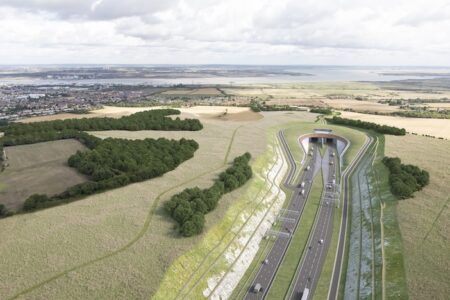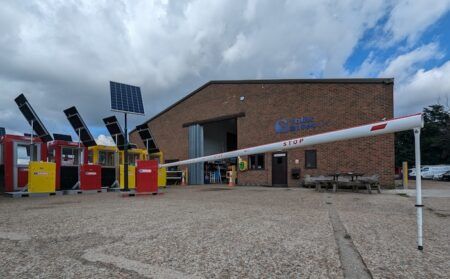A new software system has enabled Oklahoma state bridge inspectors to provide a faster, more targeted response in ensuring public safety the next time an earthquake strikes.
The Oklahoma Department of Transportation (ODOT) is now implementing the use of ShakeCast, a program created by the US Geological Survey (USGS), which is in the final stage of a two-year, two-phase, nearly US$650,000 contract with Infrastructure Engineers Inc. of Edmond to assist the department in developing an earthquake response protocol.
The ShakeCast program will enable the nearly 300 trained ODOT employees to quickly determine which bridges to inspect first after an earthquake. If conditions warrant, key ODOT employees will receive a software-generated inspection priority order based on several factors, including ODOT bridge data, such as bridge condition, age and proximity to an earthquake’s epicenter, combined with USGS seismic movement data and magnitude rating.
Previously ODOT visually inspected all bridges within five miles (8km) of any earthquake epicenter measuring between 4.4 and 4.7 magnitude on the Richter scale. The inspection radius increased with the earthquake magnitudes. Generally, with a 4- to 5-magnitude earthquake no damage has been found. Going forward with ShakeCast, the inspections will identify only specific bridges susceptible to damage, allowing for a faster and more pinpointed response. The consultant assisted the department with interfacing ODOT bridge inventory data with the ShakeCast software, developing bridge fragility models and disaster preparation plans, training and implementing the alert system for bridge inspectors.
ODOT bridge engineer Steve Jacobi noted that Oklahoma transportation infrastructure has withstood the increased number and severity of earthquakes since 2010 with two instances of cosmetic damage found after the 5.8-magnitude Pawnee earthquake in September 2016, and minor damage to US-62 pavement after a 5.6-magnitude earthquake near Prague in 2011.
While seismic activity seems to have lessened in the state, Oklahoma’s chances of earthquake-related bridge damage also are lessened due to the replacement of more than 900 structurally deficient bridges since 2004. The majority of the state’s remaining 251 structurally deficient bridges are scheduled for replacement by the end of the decade.
“This technology is one of the biggest advances in ensuring public safety that I’ve seen in my 30-year career at the department,” said Casey Shell, ODOT’s chief engineer. “By comparing state bridge data with the severity of an earthquake’s ground motions, ShakeCast will allow us to inspect fewer bridges, but with a much greater degree of confidence that we could quickly find any potential damage.”




